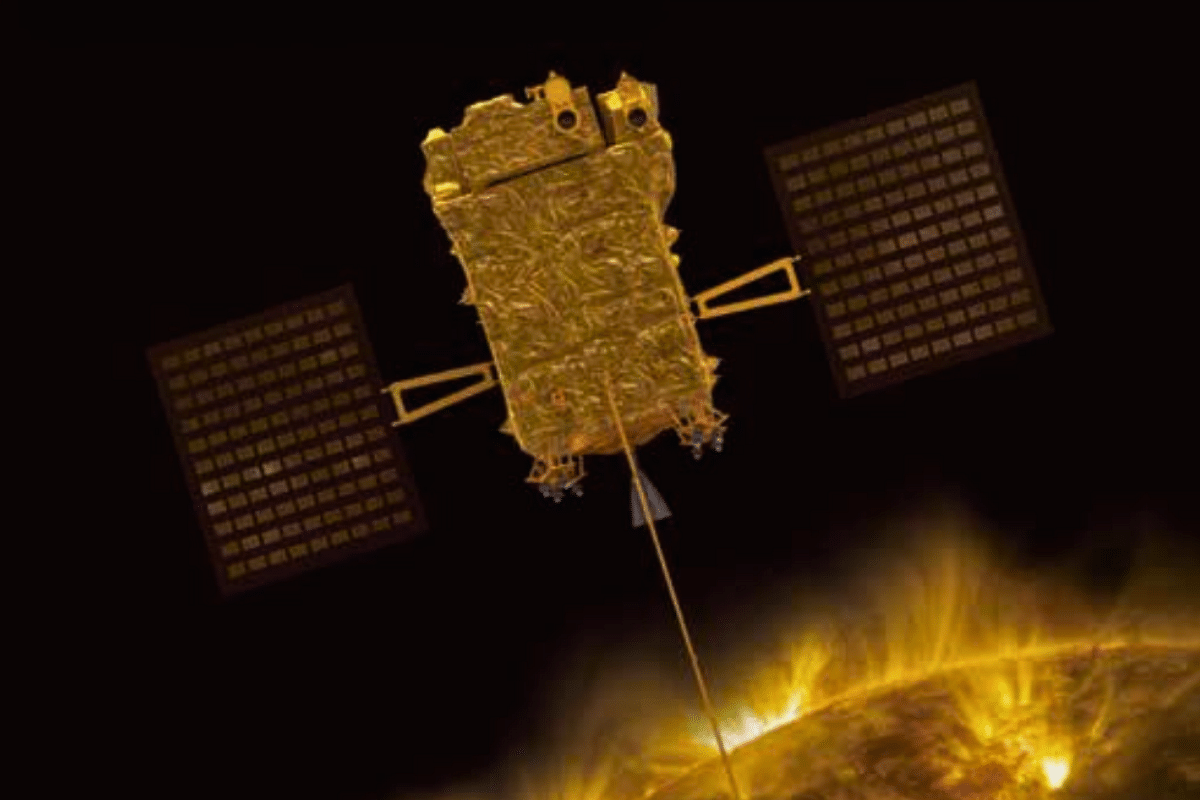Science
Aditya-L1: How India's Sun-Studying Spacecraft Will Reach Its Destination Lagrange Point 1
- Aditya-L1's total journey time from spaceport Sriharikota (Earth) to L1 is estimated to be about four months.

An illustration of the Aditya-L1 spacecraft after it has been deployed, depicted in an ISRO mission booklet
The spacecraft Aditya-L1 is drawing all the focus, and understandably so, but the 11.50 am launch on Saturday (2 September) will first and foremost need the services of India's workhorse rocket, the polar satellite launch vehicle (PSLV), to get up off the ground.
Aditya-L1 will ride on PSLV-C57, the 59th flight of the PSLV and the 25th mission using the PSLV-XL configuration.
The 44.4-metre-tall, four-stage rocket has a lift-off mass capability of 421 tonnes. The Aditya-L1 spacecraft alone, which sits within the nose cone of the PSLV-C57, has a mass of 1,480.7 kg.
The launch vehicle carrying Aditya-L1 will lift off from the second launch pad of the Satish Dhawan Space Centre, Sriharikota (SDSC-SHAR). It will launch the solar spacecraft into a highly eccentric Earth orbit.
The process from launch to Aditya-L1 separation from the rocket will take just over an hour long (approximately 63 minutes).
India's solar probe will stay in Earth-bound orbits for 16 days, until about 18 September.
This phase, which will see the spacecraft assume increasingly elliptical orbits, will be spurred through five manoeuvres to achieve the velocity necessary for a kick off to its destination, the Lagrange point 1 (L1) of the Sun-Earth system.
L1 is a gravitational sweet spot between the Earth and the Sun located 15 lakh kilometres away (L1 explained here).
Subsequently, the journey from the final Earth orbit to the vicinity of L1 — estimated to take 110 days — will unfold.
During this phase, Aditya-L1 will eventually exit the Earth's gravitational sphere of influence and enter a cruise phase.
Thereafter, ISRO will execute a manoeuvre to bind Aditya-L1 to an orbit around L1.
The liquid apogee motor (LAM) will be key to executing the various orbital manoeuvres.
"The satellite spends its whole mission life orbiting around L1 in an irregularly shaped orbit in a plane roughly perpendicular to the line joining the Earth and the Sun," ISRO says.
The total journey time from spaceport Sriharikota (Earth) to L1 is estimated to be about four months.
Aditya-L1 will study the Sun from 15 lakh kilometres towards the star, which is far, but nowhere close to the Sun, which is about 1,500 lakh kilometres from Earth.
“A satellite placed in the halo orbit around the L1 point has the major advantage of continuously viewing the Sun without any occultation/eclipses,” ISRO says. “This will provide a greater advantage of observing the solar activities and its effect on space weather in real time.”
The Indian space agency will study the various solar processes and their effect on space weather.
Also Read:
Support Swarajya's 50 Ground Reports Project & Sponsor A Story
Every general election Swarajya does a 50 ground reports project.
Aimed only at serious readers and those who appreciate the nuances of political undercurrents, the project provides a sense of India's electoral landscape. As you know, these reports are produced after considerable investment of travel, time and effort on the ground.
This time too we've kicked off the project in style and have covered over 30 constituencies already. If you're someone who appreciates such work and have enjoyed our coverage please consider sponsoring a ground report for just Rs 2999 to Rs 19,999 - it goes a long way in helping us produce more quality reportage.
You can also back this project by becoming a subscriber for as little as Rs 999 - so do click on this links and choose a plan that suits you and back us.
Click below to contribute.
Latest